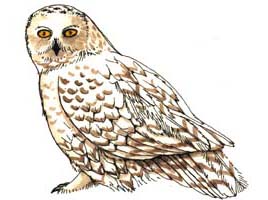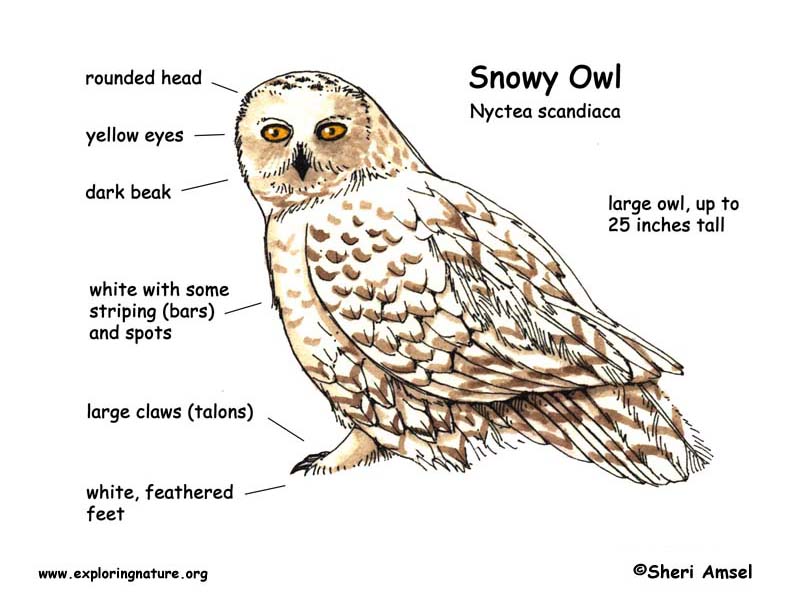

They are an owl of the far north, found in arctic Canada, Greenland, and Northern Eurasia.
They are found mostly on the tundra, but sometimes are found in marshes and on the coastlines.
The snowy owl is large, up to 25 inches tall. They are white with some striping (bars) and spots. They have a rounded head, yellow eyes and dark beak.
They hunt during the day.
They eat small mammals like hares, lemmings, and mice and also birds such as ducks and gulls.
The snowy owl begins nesting in mid-May. It scrapes a dent in the ground and lines it with moss and feathers. Females lay 4-10 eggs, more if there is a lot of food. The male brings food to the female while she warms (incubates) the eggs.
Kingdom: Animalia
Phylum: Chordata
Subphylum: Vetebrata
Class: Aves
Order: Strigiformes
Family: Strigidae
Genus: Bubo
Species: B. scandiacus
When you research information you must cite the reference. Citing for websites is different from citing from books, magazines and periodicals. The style of citing shown here is from the MLA Style Citations (Modern Language Association).
When citing a WEBSITE the general format is as follows.
Author Last Name, First Name(s). "Title: Subtitle of Part of Web Page, if appropriate." Title: Subtitle: Section of Page if appropriate. Sponsoring/Publishing Agency, If Given. Additional significant descriptive information. Date of Electronic Publication or other Date, such as Last Updated. Day Month Year of access < URL >.
Amsel, Sheri. "Owl (Snowy)" Exploring Nature Educational Resource ©2005-2024. December 13, 2024
< http://www.exploringnature.org/db/view/Owl-Snowy >

